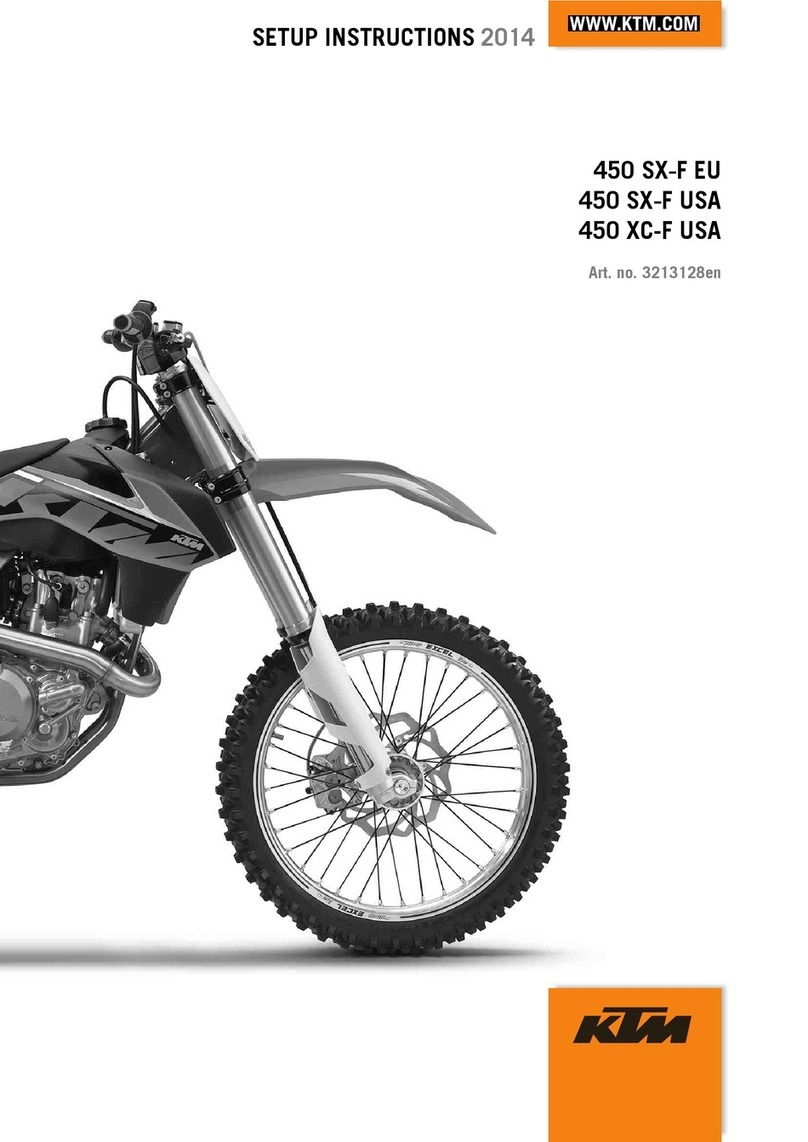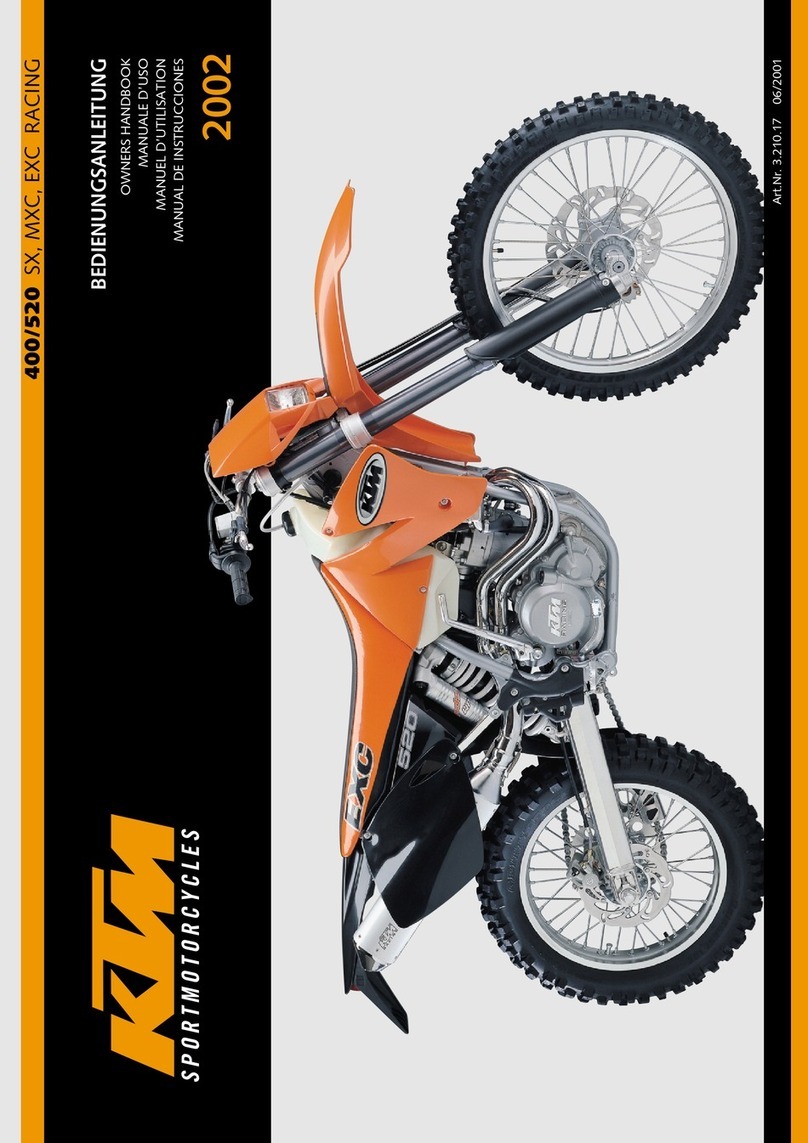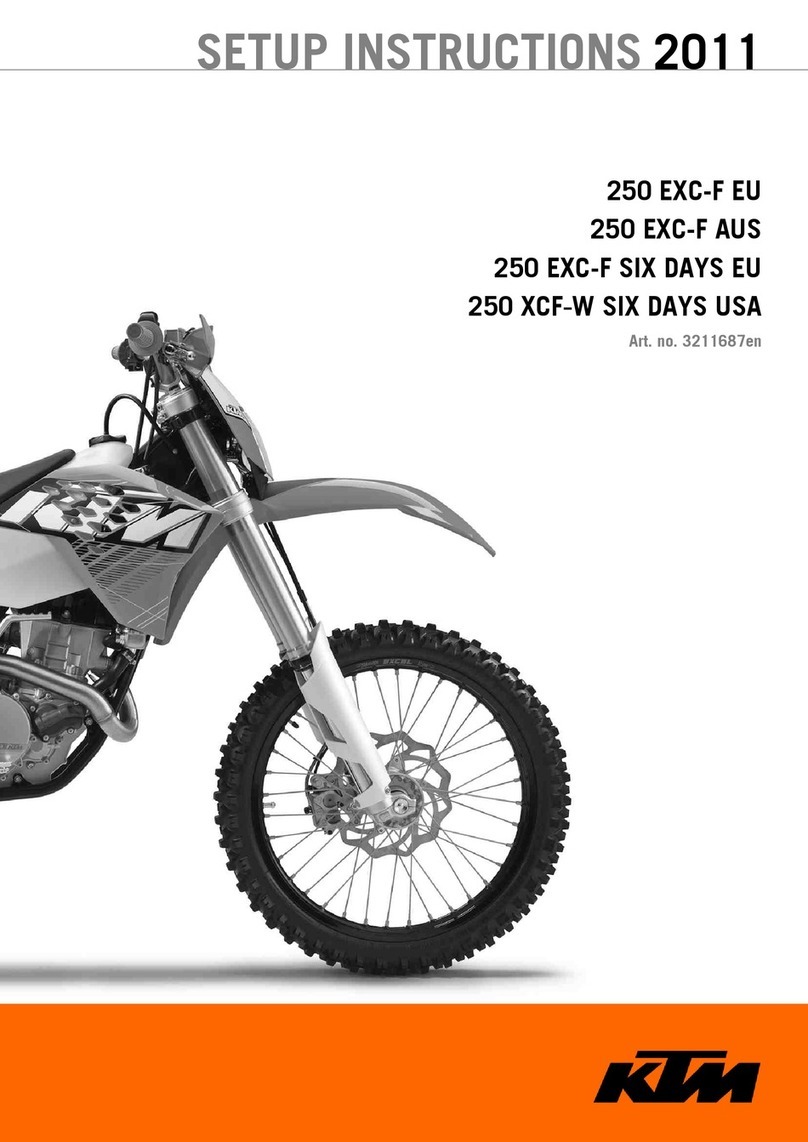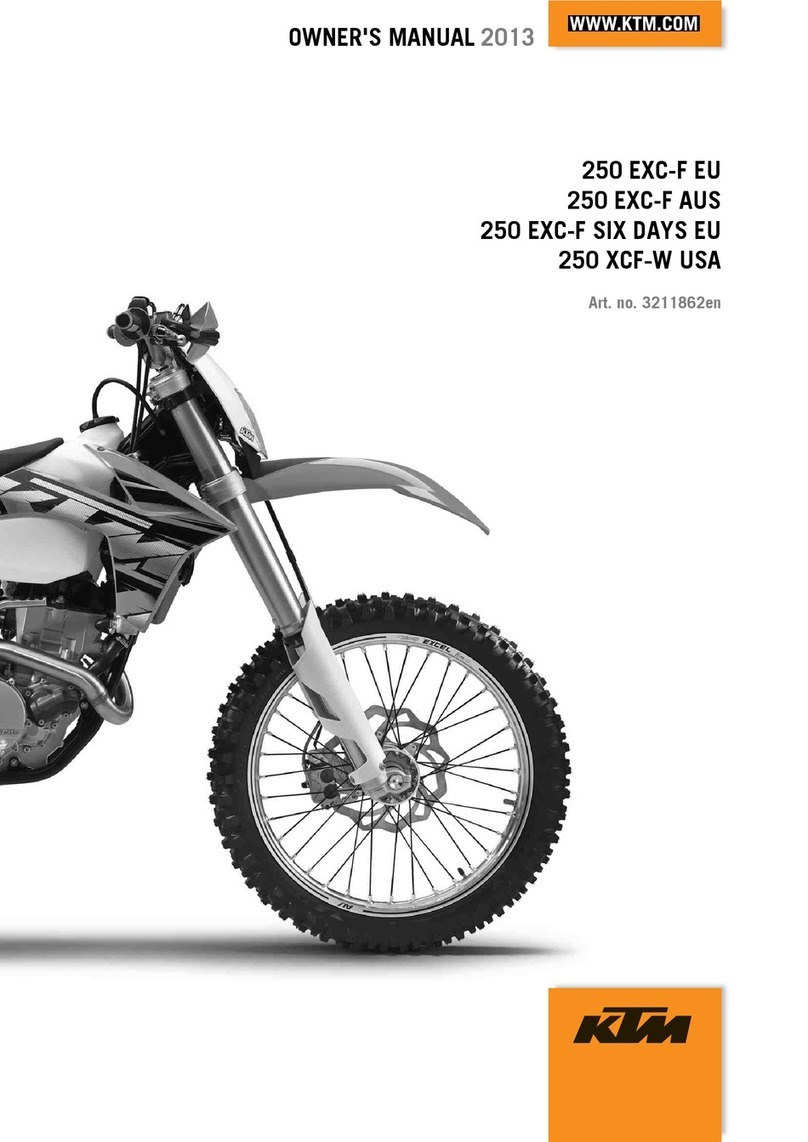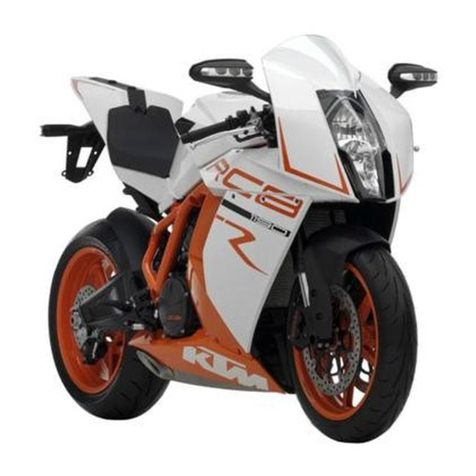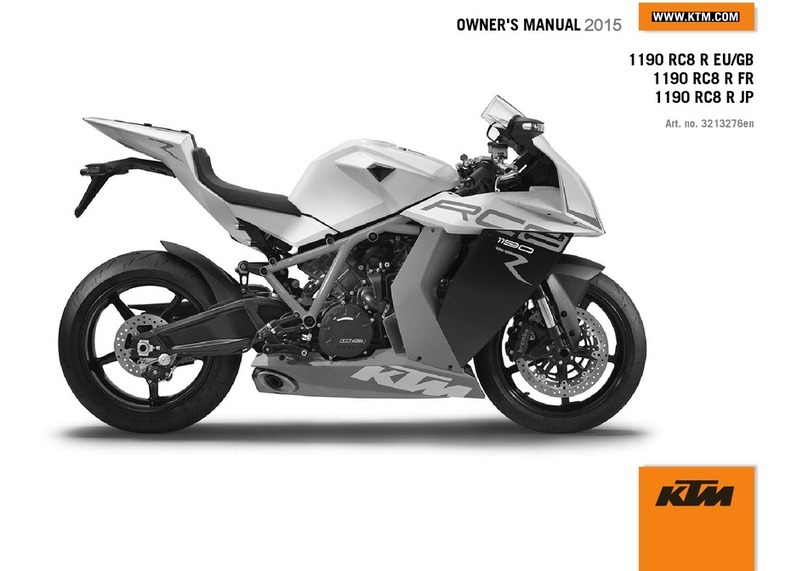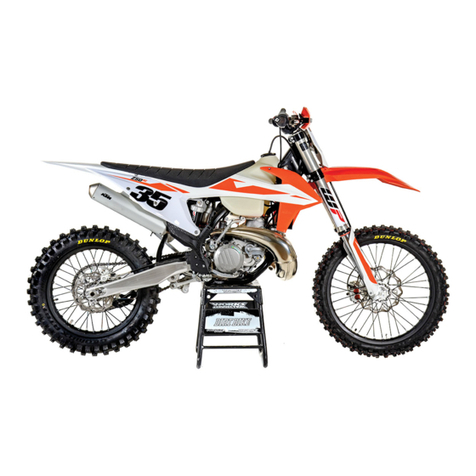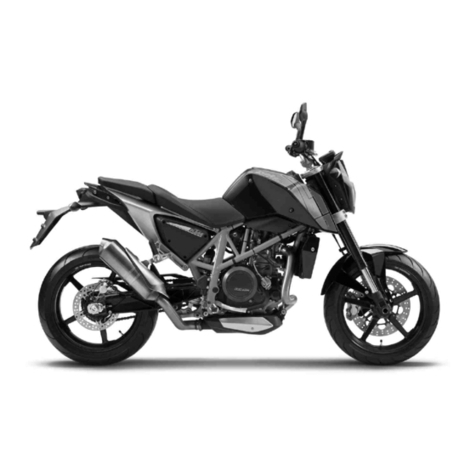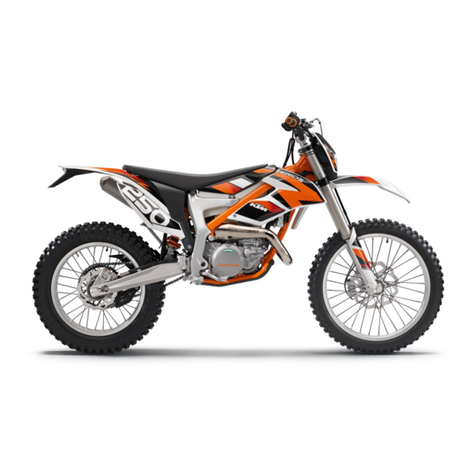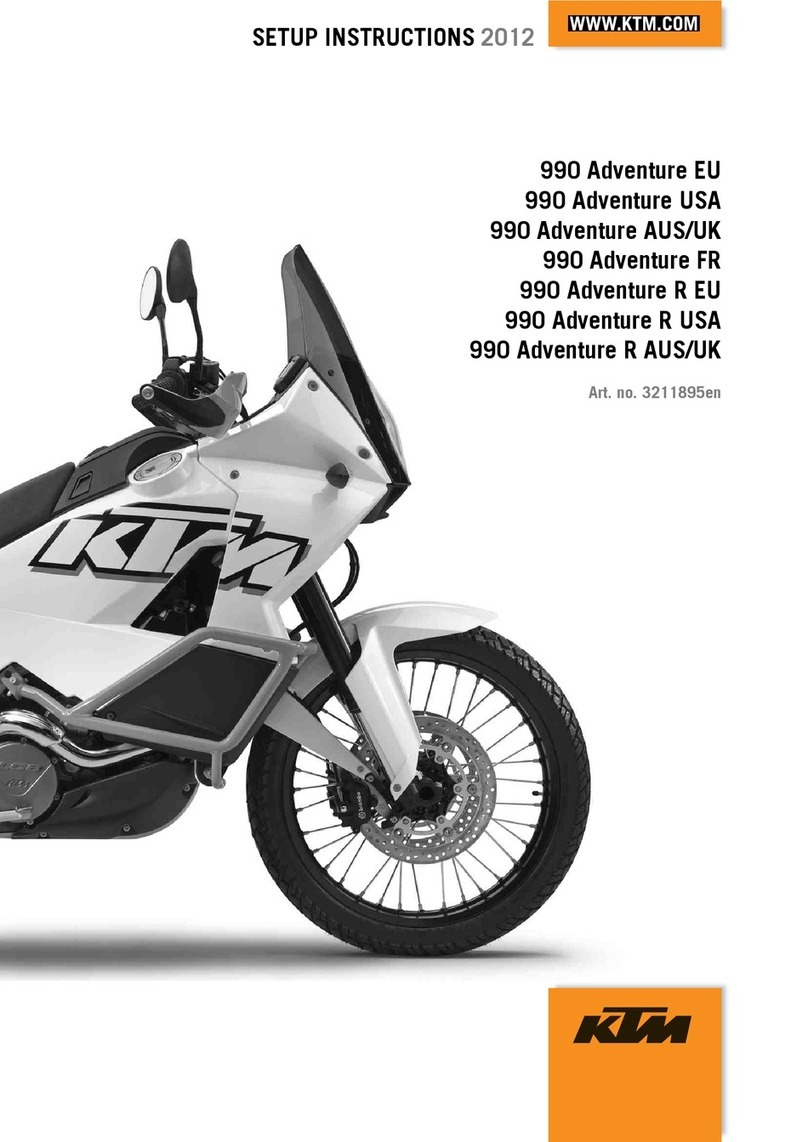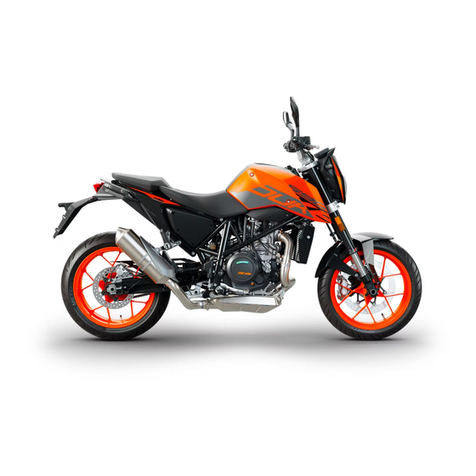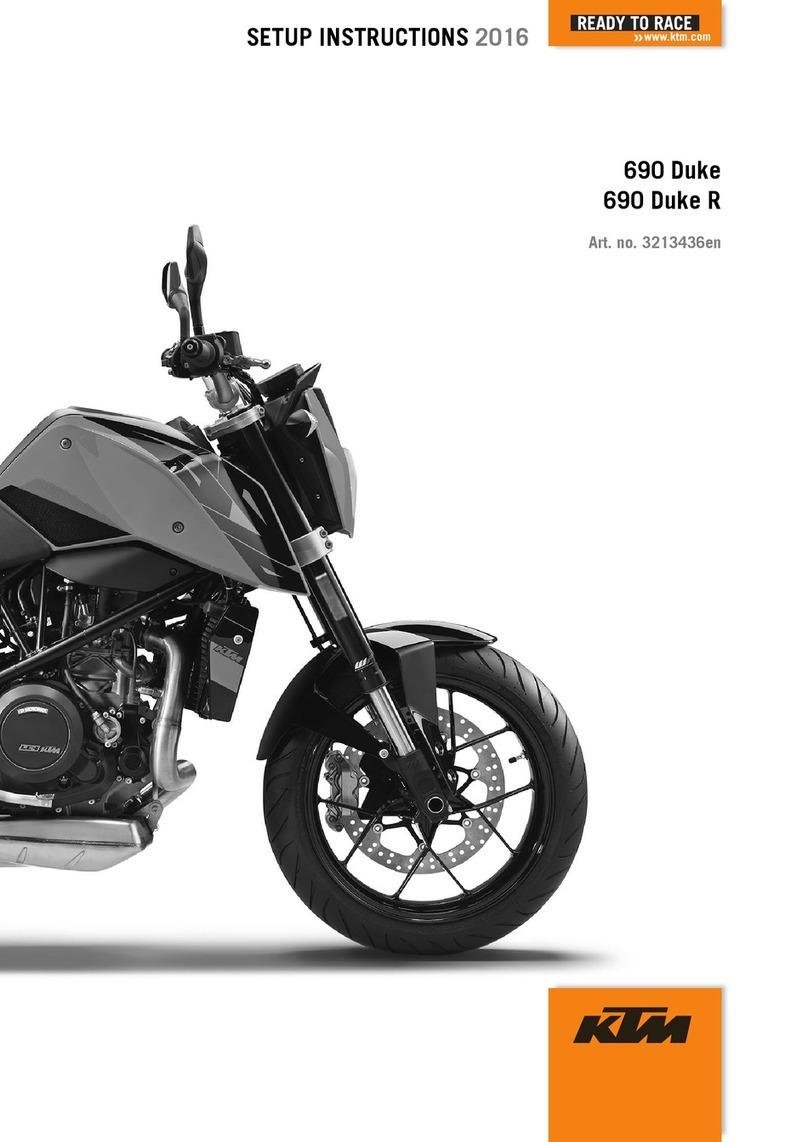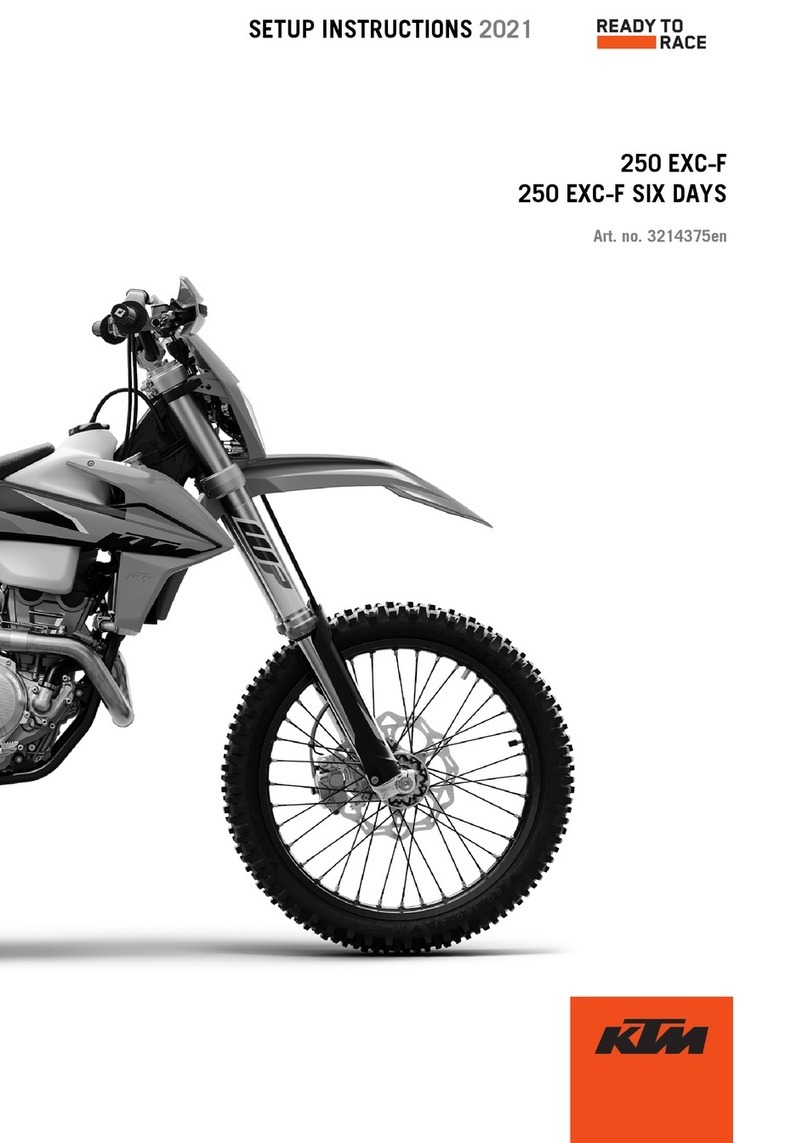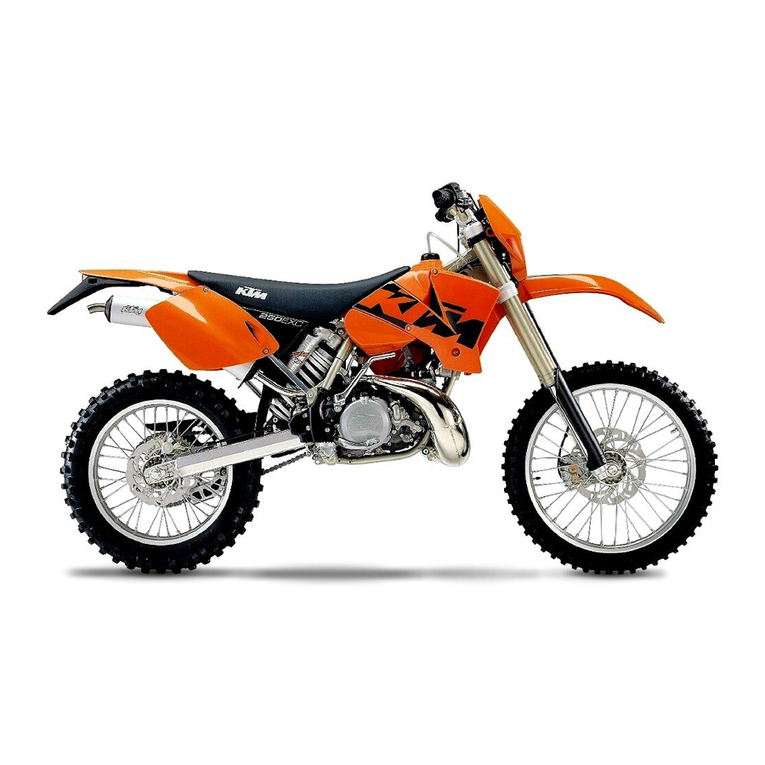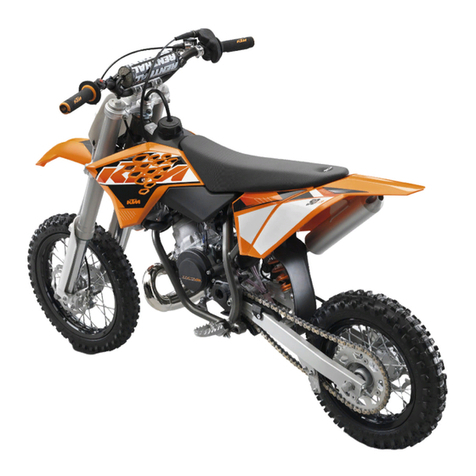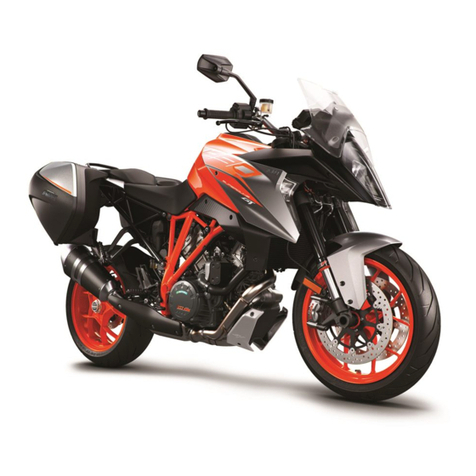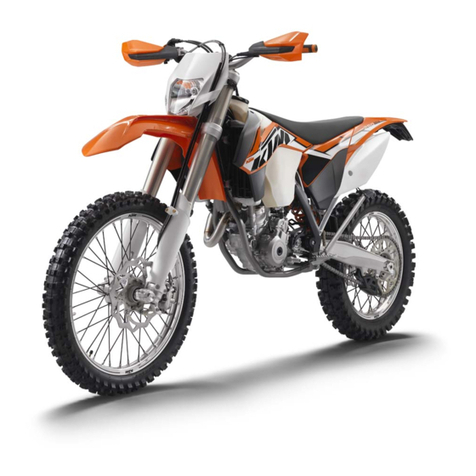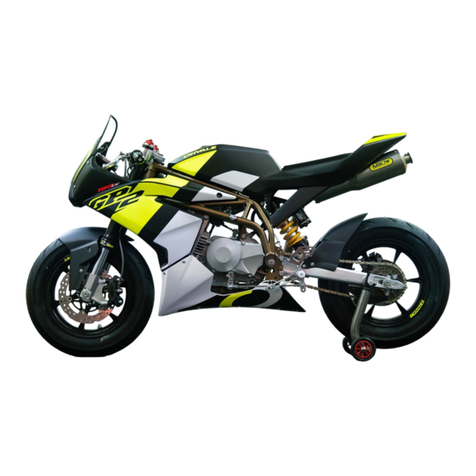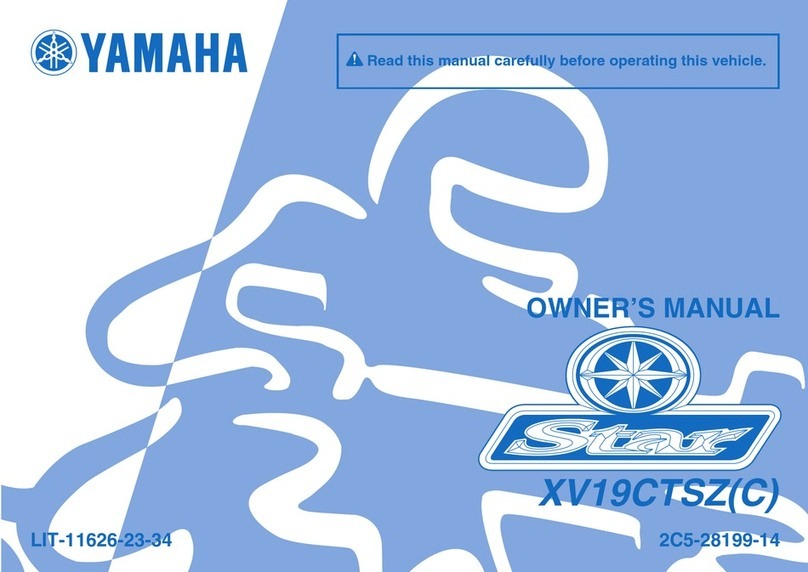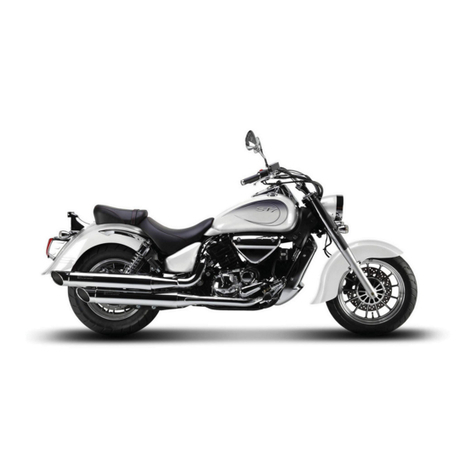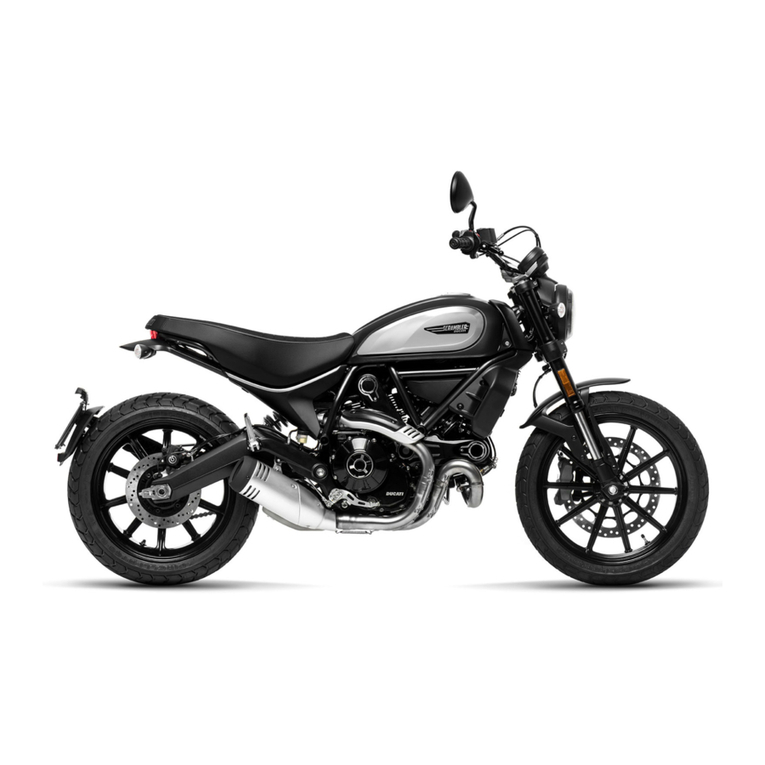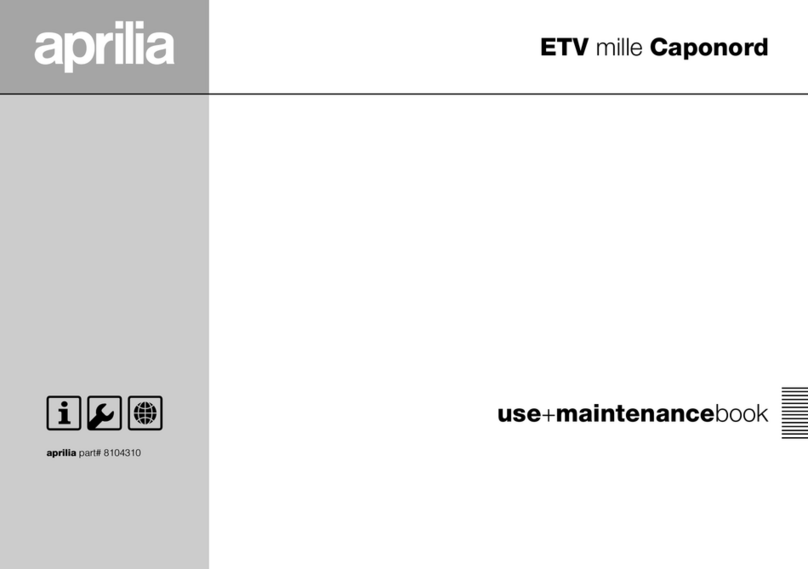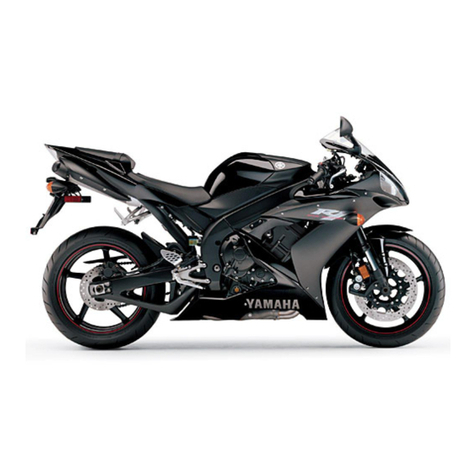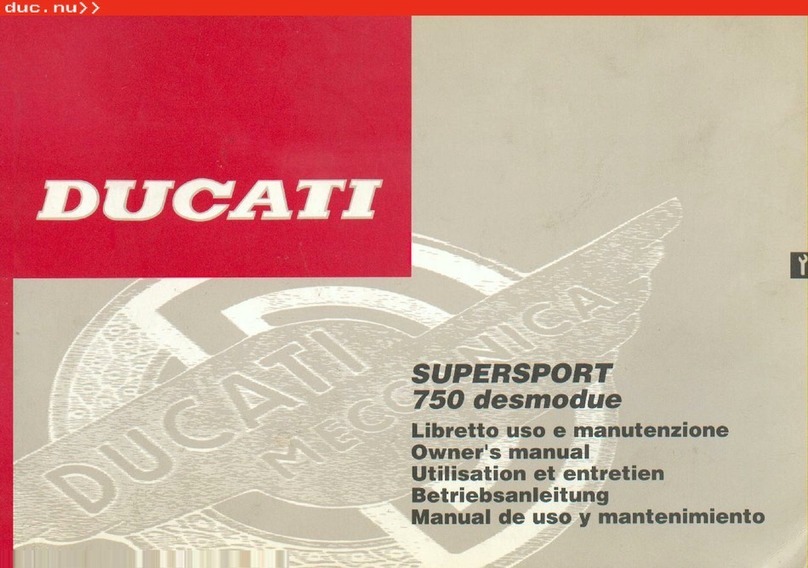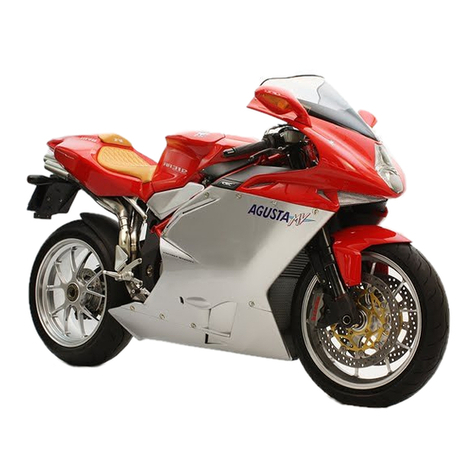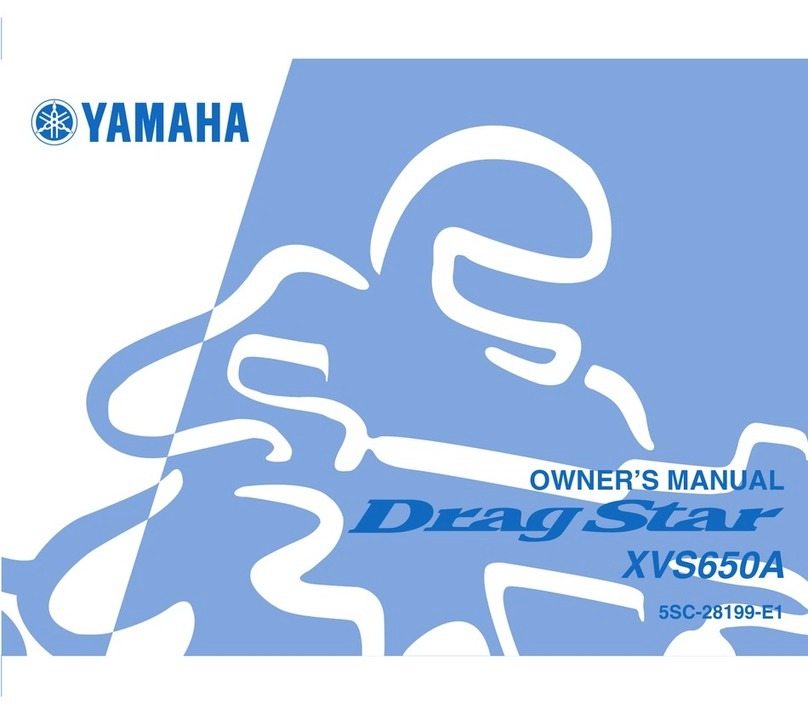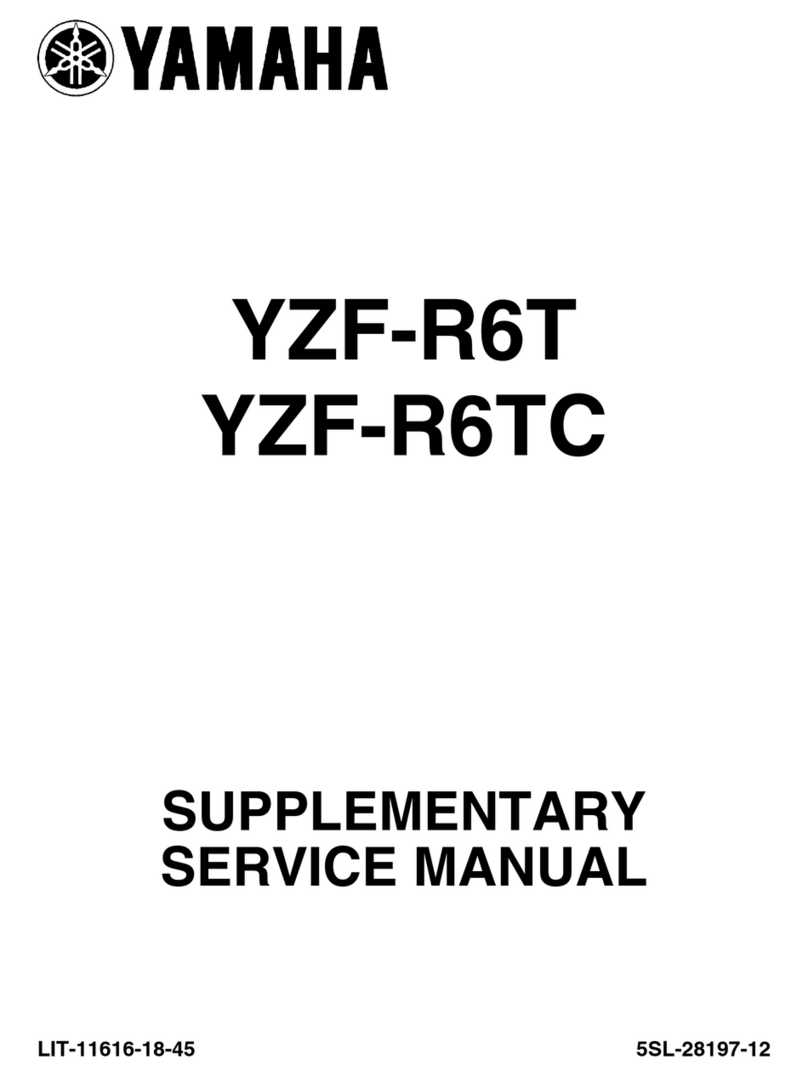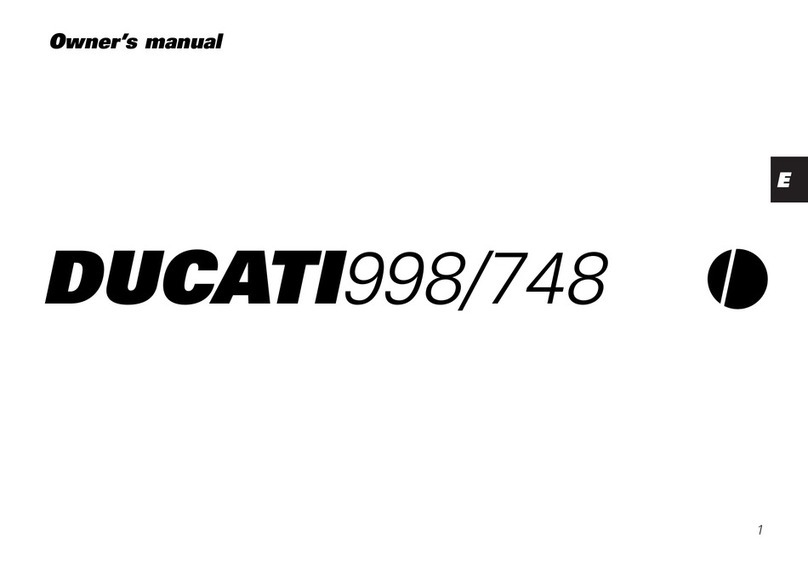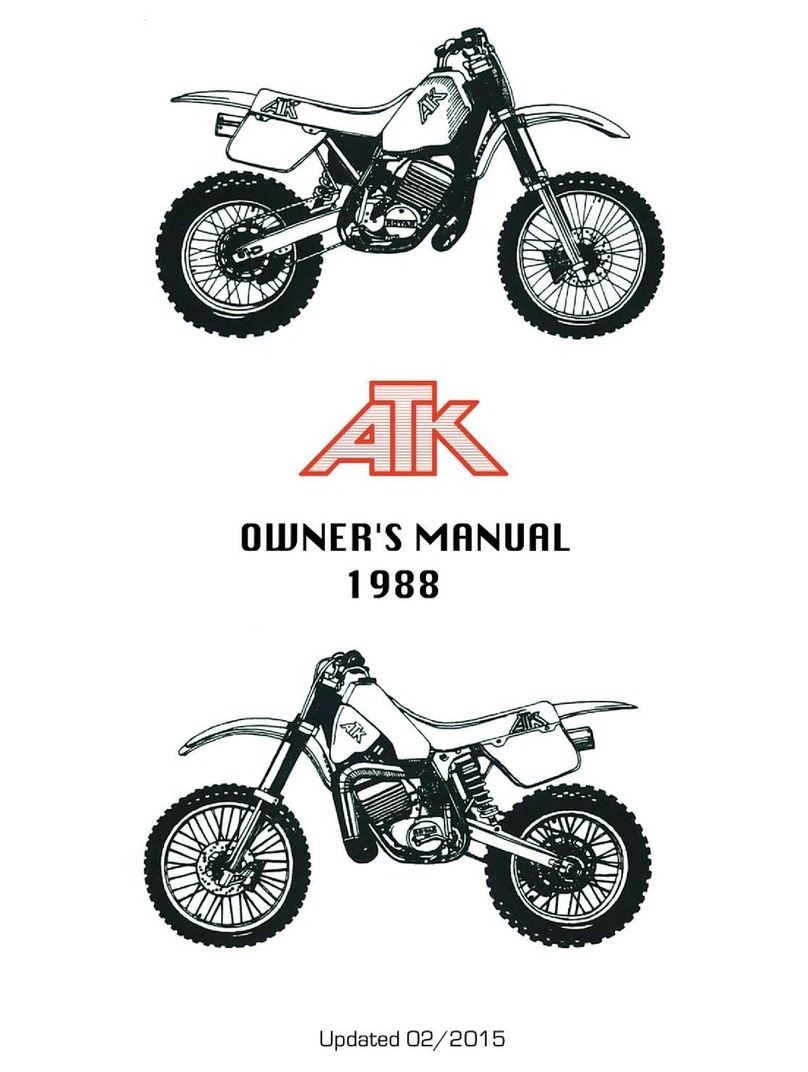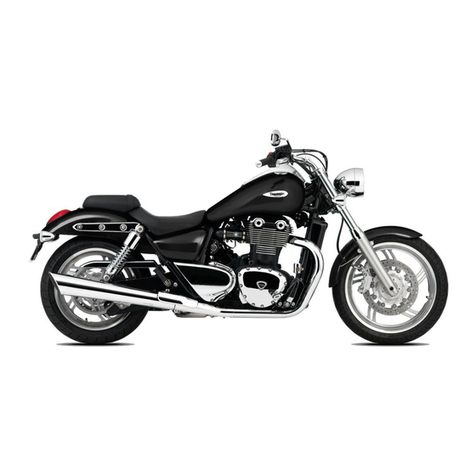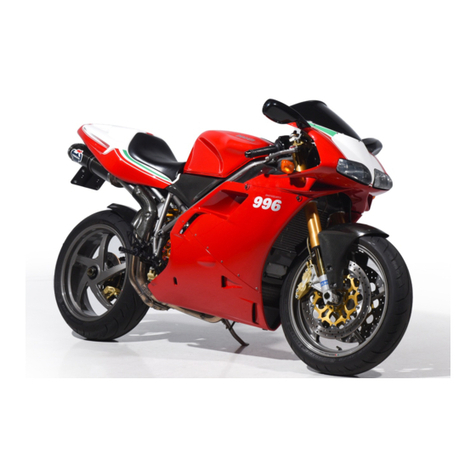
TABLE OF CONTENTS
3
11 SERVICE WORK ON THE CHASSIS ............... 42
11.1 Raising the motorcycle with a lift
stand ................................................... 42
11.2 Removing the motorcycle from the
lift stand .............................................. 42
11.3 Bleeding the fork legs......................... 42
11.4 Cleaning the dust boots of the fork
legs ..................................................... 43
11.5 Removing the fork protector............... 44
11.6 Installing the fork protector................. 44
11.7 Removing fork legs ......................... 45
11.8 Installing the fork legs ..................... 45
11.9 Removing the lower triple clamp .... 47
11.10 Installing the lower triple clamp ...... 47
11.11 Checking the steering head bearing
play ..................................................... 50
11.12 Adjusting the steering head bearing
play .................................................. 51
11.13 Greasing the steering head
bearing ............................................ 52
11.14 Removing the fuel tank ................... 52
11.15 Installing the fuel tank ..................... 53
11.16 Removing the start number plate ....... 54
11.17 Installing the start number plate ......... 54
11.18 Removing front fender ........................ 55
11.19 Installing front fender .......................... 55
11.20 Removing the right side cover............ 55
11.21 Installing the right side cover.............. 56
11.22 Preparing the right side cover for
securing .......................................... 57
11.23 Removing the left side cover .............. 58
11.24 Installing the left side cover ................ 59
11.25 Preparing the left side cover for
securing .......................................... 60
11.26 Removing the shock absorber ........ 60
11.27 Installing the shock absorber .......... 61
11.28 Removing the seat.............................. 62
11.29 Mounting the seat............................... 62
11.30 Removing the air filter ..................... 63
11.31 Installing the air filter ....................... 63
11.32 Cleaning the air filter and air filter
box .................................................. 64
11.33 Removing the main silencer................ 64
11.34 Installing the main silencer.................. 65
11.35 Changing the glass fiber yarn filling
of the main silencer ......................... 65
11.36 Removing the engine sprocket
cover ................................................... 66
11.37 Installing the engine sprocket
cover ................................................... 66
11.38 Checking the chain for dirt.................. 67
11.39 Cleaning the chain .............................. 67
11.40 Checking the chain tension ................ 68
11.41 Adjusting the chain tension................. 69
11.42 Checking the chain, rear sprocket,
engine sprocket, and chain guide....... 70
11.43 Adjusting the chain guide ............... 74
11.44 Checking the frame ......................... 74
11.45 Checking the link fork ..................... 74
11.46 Checking the throttle cable routing .... 75
11.47 Checking the rubber grip.................... 76
11.48 Additionally securing the rubber
grip...................................................... 76
12 BRAKE SYSTEM ............................................. 77
12.1 Checking play of handbrake lever ...... 77
12.2 Adjusting the play of the hand brake
lever .................................................... 77
12.3 Adjusting the basic position of the
hand brake lever ................................. 77
12.4 Checking the brake discs ................... 78
12.5 Checking the front brake fluid level .... 79
12.6 Adding the front brake fluid ............ 80
12.7 Checking the front brake linings......... 81
12.8 Changing the brake linings of the
front brake ....................................... 81
12.9 Checking the free travel of the foot
brake lever .......................................... 85
12.10 Adjusting the free travel of the foot
brake lever ...................................... 85
12.11 Adjusting the basic position of the
foot brake lever ............................... 86
12.12 Checking the rear brake fluid level ..... 86
12.13 Adding rear brake fluid .................... 87
12.14 Checking the brake linings of the
rear brake............................................ 88
12.15 Changing the brake linings of the
rear brake ........................................ 89
13 WHEELS, TIRES.............................................. 94
13.1 Removing the front wheel ............... 94
13.2 Installing the front wheel ................. 94
13.3 Removing the rear wheel ................ 95
13.4 Installing the rear wheel .................. 97
13.5 Checking the tire condition................. 98
13.6 Checking tire pressure........................ 99
13.7 Checking spoke tension ................... 100
14 COOLING SYSTEM....................................... 101
14.1 Cooling system ................................. 101
14.2 Checking the antifreeze and
coolant level...................................... 101
14.3 Checking the coolant level................ 102
14.4 Draining the coolant ...................... 102
14.5 Refilling with coolant ..................... 103

